East Germany: June 1988
The West Germany (BRD) border with the DDR on the Baltic Sea coast near Lubeck. "Halt! Hier Grenze"

A closeup of the Bundesgrenzschutz´s border marker
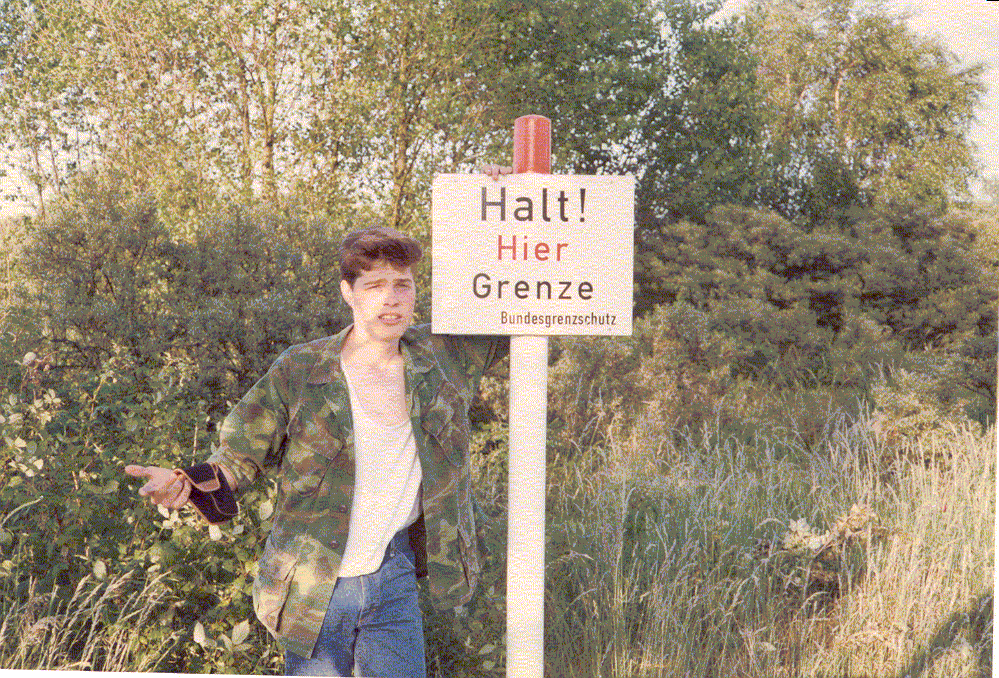
Another view of the border on the Baltic Sea. The DDR Grenztruppen watchtower can be seen in the distance, as can the actual border post painted in black, gold and red stripes.

One of the larger signs in this border area, just to the south of the shore. It states:
Achtung! Grenzbesucher!
Die Grenze am Uferstreifen ist gekennzeichnet durch 2m hohe weisse Plastikpfahle mit roter Kappe und Hinweisschildern.
Diese Pfahle stehen unmittelbar an der Grenze. Hinter diesen pfahlen beginnt DDR-Gebiet. Bei Uberschreiten der Linie zwischen den Pfahlen mussen Sie mit einer Festname durch die Grenztruppen der DDR rechnen. Bei Hochwasser ist der zur Bundesrepublik Deutschland gehorende Uferstreifen nicht begehbar.

The Berlin Wall. This is behind the Reichstag.

The Berlin Wall.
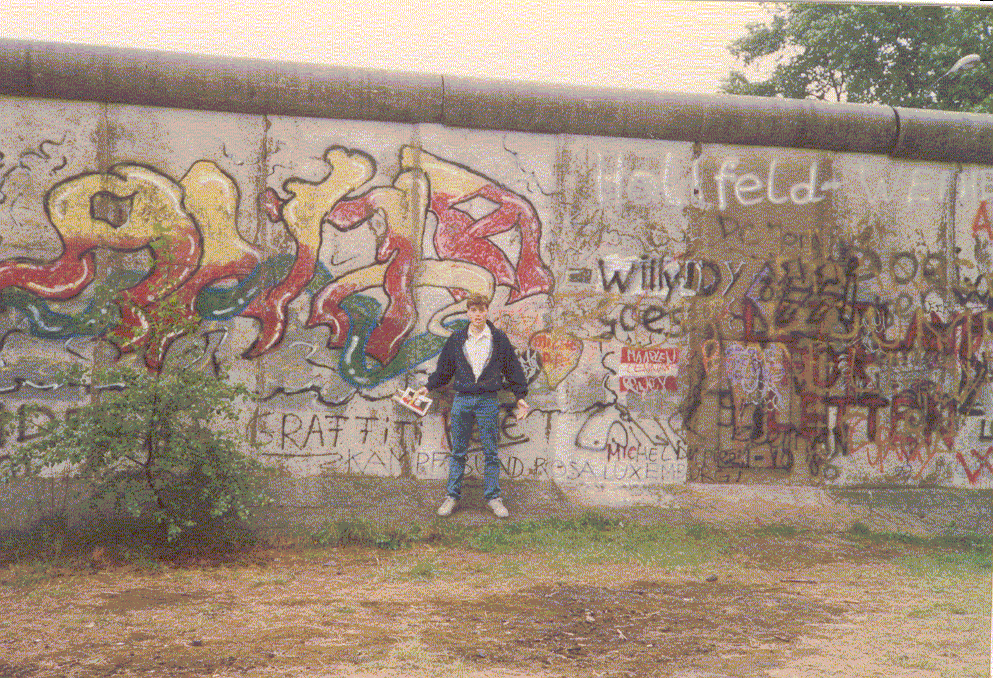
Behind the Reichstag. Memorials to those killed trying to cross the border since 1961.

A view of Checkpoint Charlie in June 1988. The ´Wall Museum´ to the right of the checkpoint served up an interpretation of the politics of the Cold War that was quite exotic to someone born and raised in the Upper Midwest of the United States.

Checkpoint Charlie.

This British soldier at Checkpoint Charlie entertained himself by scaring the crap out of people by putting on his protective mask and screaming at tourists walking by his window at the Checkpoint. Meanwhile, at the French window, the French soldier slid his window open with a bored expression, and seeing it was just tourists, just slapped his window shut again and went back to his TV program.

The sign at Zimmerstrasse, next to Checkpoint Charlie. You Are Leaving the American Sector, and going into East Berlin.
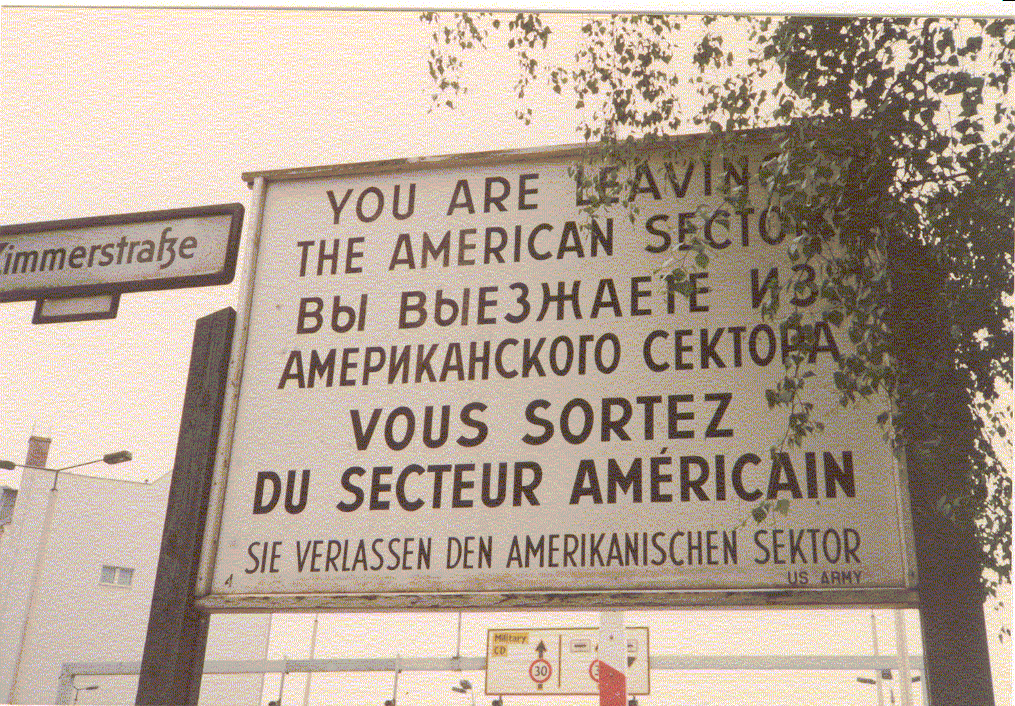
East Berlin. A view of the Palast der Republik and the big Radio/TV Tower.
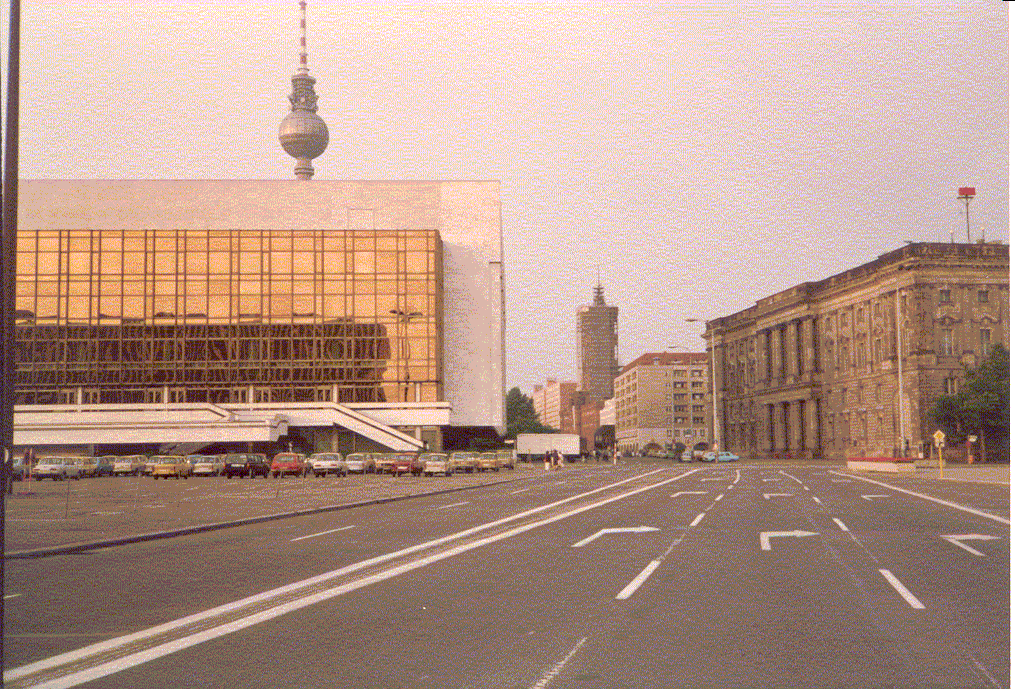
The Unter Den Linden street in East Berlin.

Humboldt University.
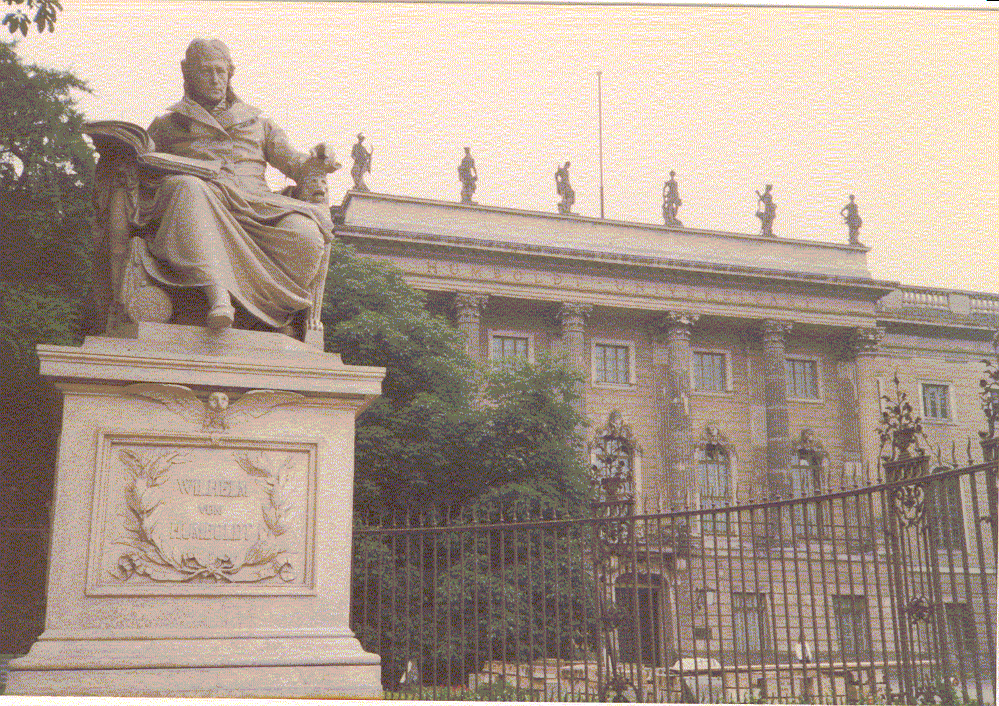
The Soviet Embassy in East Berlin, replete with bust of Lenin.

A real classy (and very closed) ´Sowjetische Exporter Zeugnisse´.

An Ossie Trabant with an "alloted parking time" card in the window.

An East Berlin street scene. East Berlin was practically a ghost town, and in stark contrast with the other side of the wall.
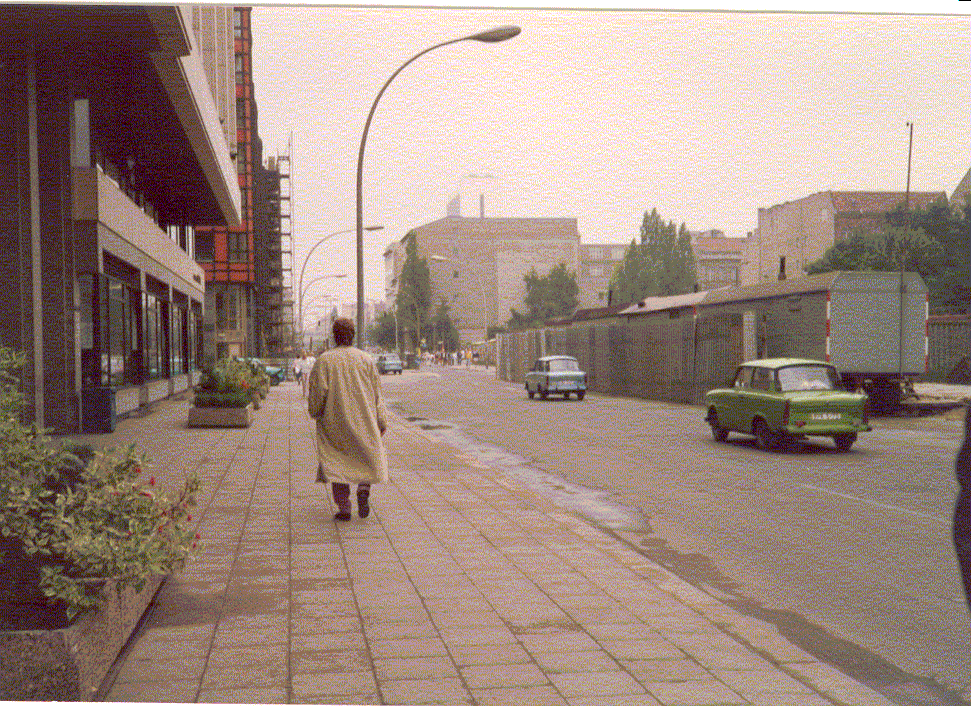
An East Berlin residential block. The ´melodie´ record store would have been interesting to visit. It was closed, though.

The famous East Berlin Glockenspiel.

These soldiers are guarding the memorial known as "The New Guardhouse" (Die Neue Wache), a site commemorating the "victims of facism and militarism", in other words, victims of the Third Reich. An unknown German soldier from the second world war and an unknown concentration camp victim were interred here. The ´Neue Wache´ is still standing; after German reunification the Federal Government renamed it the ´Memorial to the Victims of War and Tyranny´
During my stay in East Germany, I was told that this was a memorial for the at Grenztruppen (East German Border Troops) who were killed in the course of their duties between 1946 and 1989. Some 30 Grenztruppen were ambushed and killed at their posts on the border areas by defectors who then ran into West Germany. It is probably true that the defectors felt that they had to resort to such violent means to defect at the border, but it is also true that the killings of the Grenztruppen were rarely prosecuted in the West.
In any case the soldiers here were probably not Grenztruppen, but members of the NVA (East German Army) Wachregiment, "Friedrich Engels".

Goose-stepping soldiers are always impressive. Notice all of the US and British military personnel in the background.

All the tourists showed up to watch the Changing of the Guard.
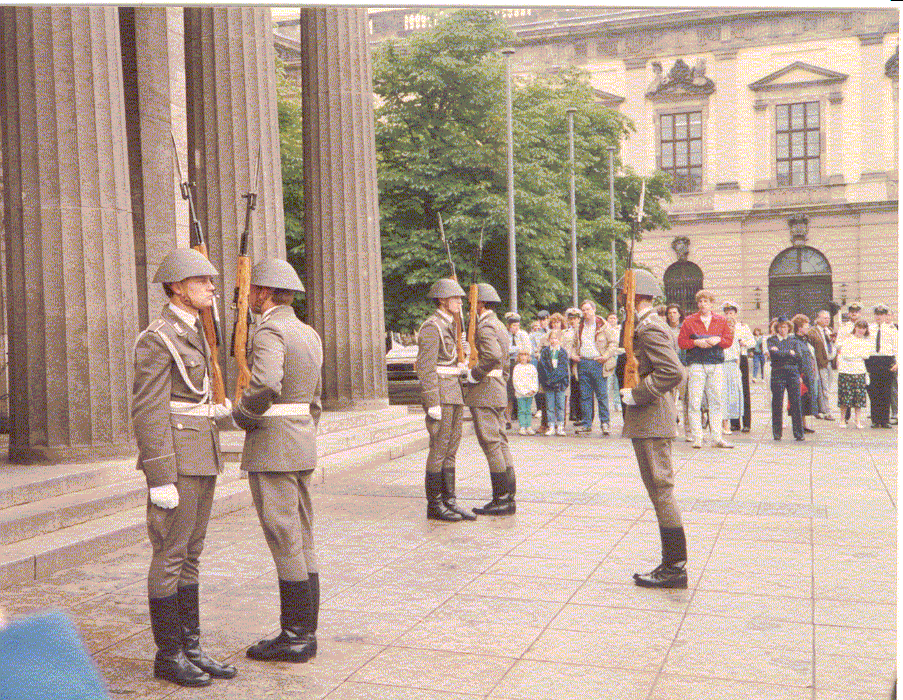
Keeping an eye on the cameraman. In two years, he´d be out of a job...along with all the rest of the Ossies. To be fair, the Grenztruppen showed considerable restraint at the time of the collapse of the wall in 1989, and were most likely instrumental in keeping the event from turning more violent.
Visit the former Grenztruppen´s website to learn more of their point of view (in German).
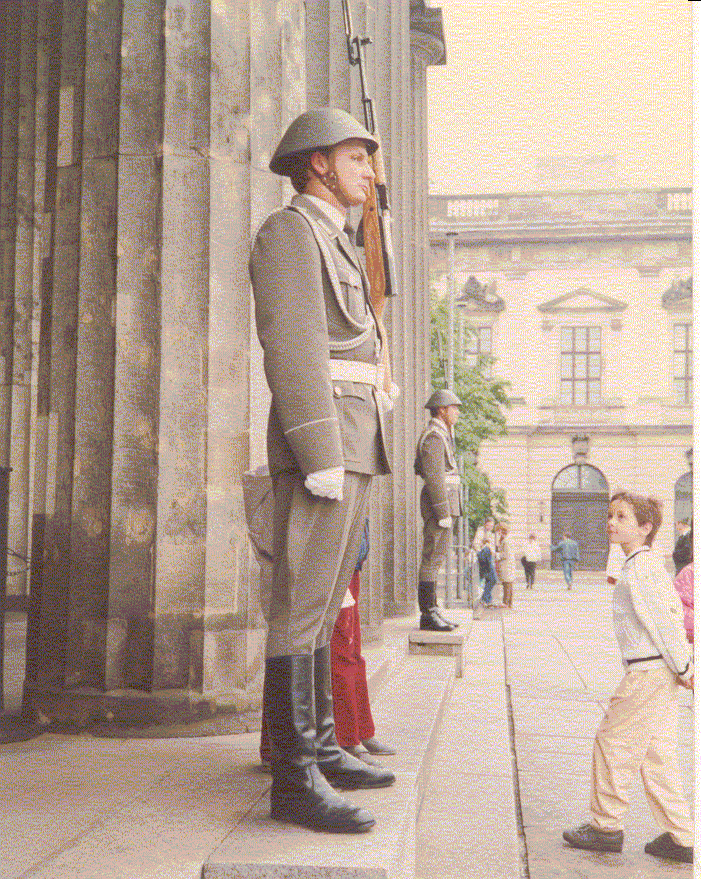
A work of art at a nearby museum dedicated to the Liberation From Fascism. A Soviet soldier tears apart the shackles of fascism ensnaring the German. Picture-taking was not allowed at this museum.
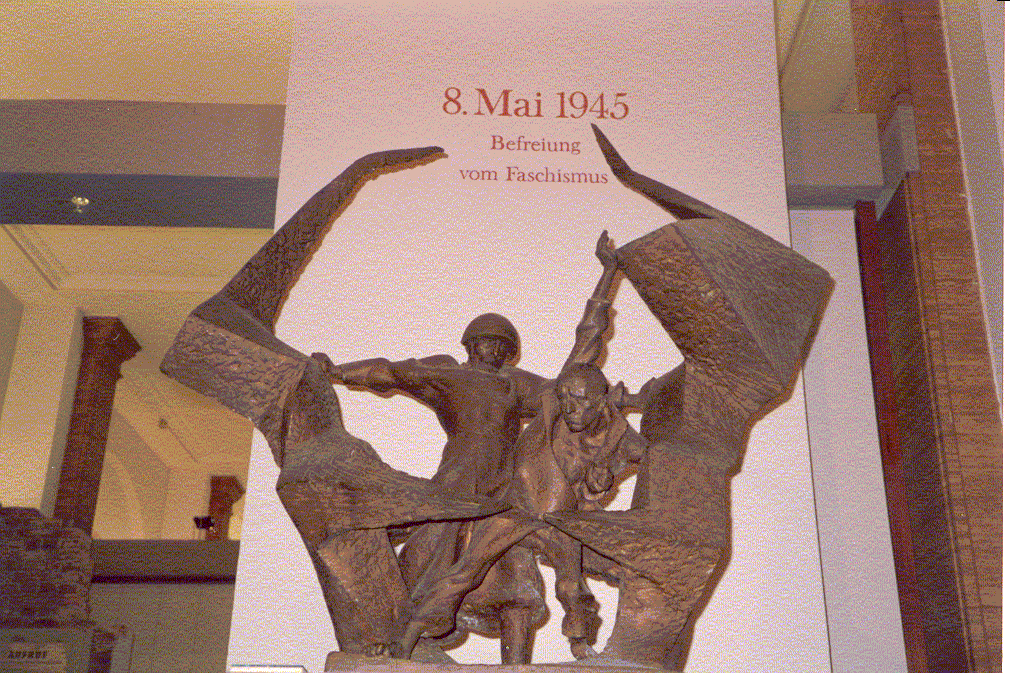
The eternal flame at "Die Neue Wache".

Back in West Berlin, where theatres were showing films with lots of explosions and monumental acting.

HOME PAGE


























